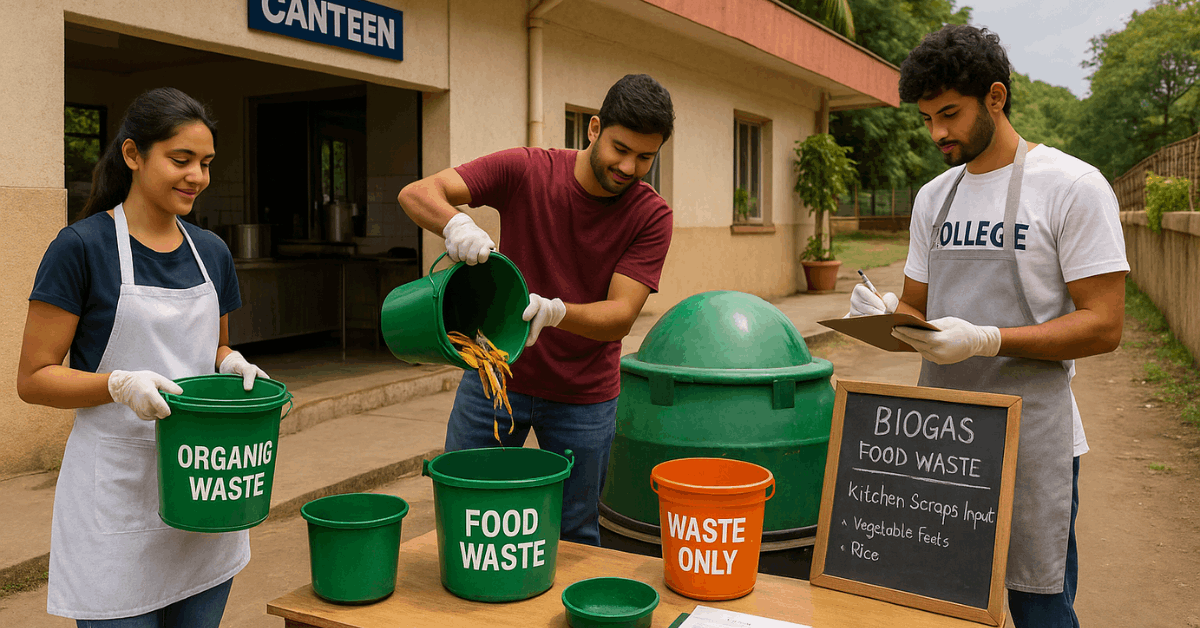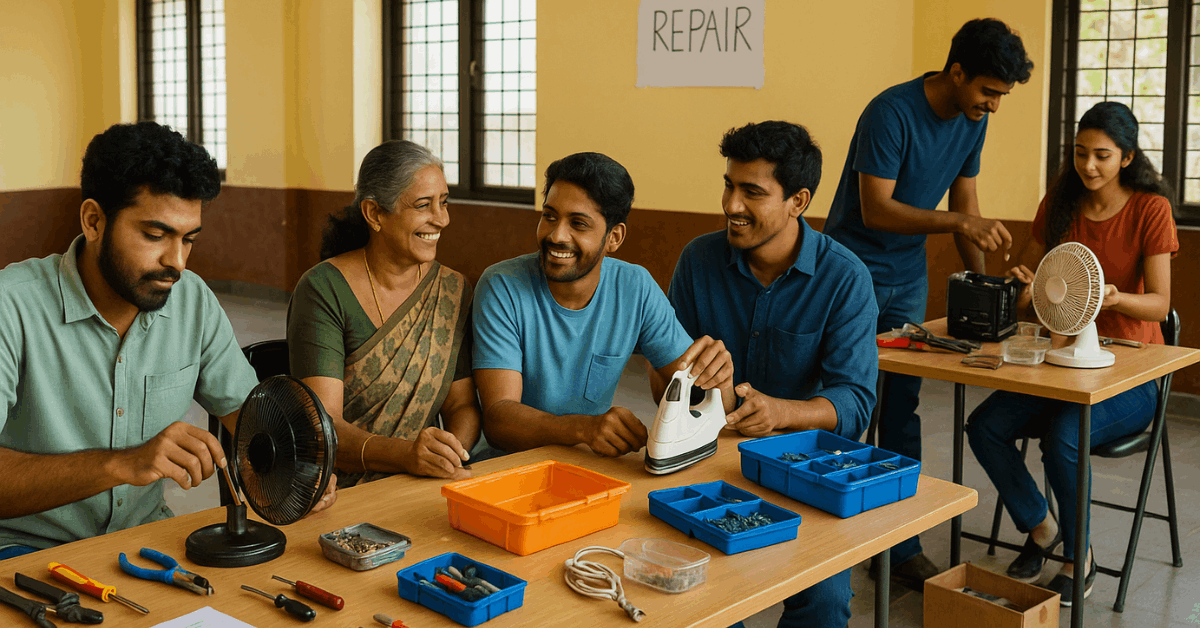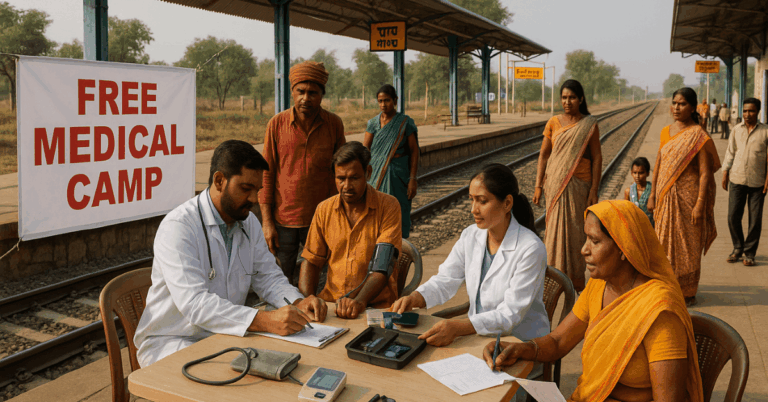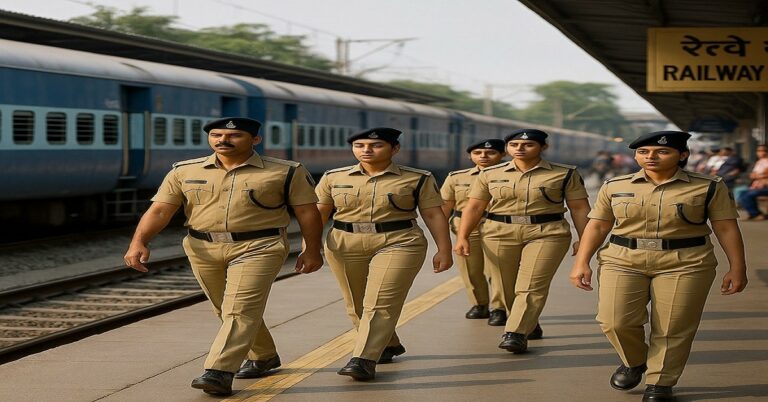Waste Segregation Projects led by youth groups translate policy into habits that households, campuses, and neighborhoods can sustain year-round.
India’s figures sharpen the case: municipal waste exceeds 62 million tonnes annually, yet only about 75–80% is collected and roughly 22–28% is processed.
Why Youth-Led Waste Segregation Projects Work
Peer energy changes norms faster than signage alone. Student organizers normalize steel plates at fairs, set up bin stations, and model sorting on crowded days when most mistakes happen.

Intergenerational learning strengthens adoption, as elders share low-cost practices like cloth bags and ash-based cleaners while students handle QR check-ins, trackers, and social posts.
Visible results, cleaner lakes, lighter dumpsters, and compost-fed gardens, give communities a reason to keep going.
The Starter Model: Two- or Three-Stream Segregation Done Right
Effective projects lock in source segregation first. Match collection to two or three streams: wet/organic, dry/recyclable, and domestic hazardous, since this aligns with India’s Solid Waste Management Rules, 2016, and keeps downstream processing efficient.
Clear color codes, pictograms, and bilingual labels reduce decision time at the bin. Volunteers should hover during peak hours to coach sort decisions, redirect contaminants, and record problem items for next-week nudges.
Resident Welfare Associations (RWAs) and campus facilities must confirm that haulers collect the same streams separately to avoid “back-mixing,” which kills trust quickly.
Project Playbook for Local Groups
Short planning cycles keep momentum high and logistics tight.
- Set one measurable goal for a 30–60 day sprint, such as “90% of stalls using reusables” or “85% correct sorting at bin banks.”
- Secure permissions and align pickup pathways; confirm hauler capacity for organics, recyclables, and domestic hazardous streams.
- Equip stations: paired or triad bins, lid openings that match items, gloves, grabbers, and weigh scales for reporting.
- Train micro-teams: greeters, bin coaches, weigh-and-log crew, and a rapid-response pair for contamination hotspots.
- Close the loop: publish results, thank partners, and announce the next challenge before enthusiasm fades.
Field Examples and Case Snapshots
Momentum grows when local stories feel repeatable and low-cost. The snapshots below show structures that small teams can replicate without specialized equipment. Expect quick wins when segregation combines with reusables and simple tracking.
Campus Biogas and Canteen Loops, Pune
Student teams at engineering colleges have piloted small biogas units that feed on kitchen scraps, demonstrating a direct value path for segregated organics. The result is fuel for cooking demos and a steady reason to keep food waste out of mixed bins.
Plastic-Free Festivals, Mumbai Housing Societies
Festival committees replace thermocol and balloons with cloth backdrops and potted plants, while volunteer stewards coach stallholders on reusables. Segregation remains easier because disposables are minimized upfront.
Repair Cafés, Kerala Youth Clubs
Weekend repair tables extend product life for clothes and small appliances, cutting waste at the source. Segregation improves because fewer broken items hit mixed waste in the first place.
RECycle and Recyclethon, NIT Trichy
Student recyclathons transform discards into furniture and art that stay visible on campus. Public installations reinforce correct sorting at events and shift the culture toward reuse.
CBSE Eco-Clubs Across India
Eco-clubs run zero-waste annual days, tree-planting drives, and school-gate bin banks, providing a steady pipeline of trained student volunteers for neighborhood cleanups and workshops.
Roles for Schools, NGOs, and Corporate Volunteers
Schools supply continuity through eco-clubs that rotate responsibilities by house or grade, ensuring each term trains a new crew of bin coaches and data loggers.
NGOs such as Bhumi and Chintan add curricula, contest frameworks, and hotline support so teams don’t stall after launch.
Corporate volunteers accelerate execution: teams can fund bin sets, host awareness stalls, or mentor student data leads on simple dashboards and post-event reports that RWAs can reuse.

Data, Policy, and Compliance Basics to Keep Projects Safe
Alignment with local rules protects volunteers and preserves credibility. India’s Solid Waste Management Rules, 2016 require source segregation; using the wet–dry–domestic-hazardous pattern keeps projects compliant and simplifies municipal handoffs.
Single-use plastic restrictions, effective nationwide since July 1, 2022, support upstream waste prevention and should be built into any vendor agreement for fairs or fests.
E-waste deserves a separate lane: the E-Waste (Management) Rules, 2022, introduced an improved Extended Producer Responsibility framework in force since April 1, 2023, which community drives can leverage via authorized recyclers.
Measuring Impact and Keeping Momentum
Track five low-friction metrics: kilograms of organics diverted, kilograms of dry recyclables, contamination rate at each station, number of vendors using reusables, and volunteer hours.
Run a short debrief after each activation, tag one bottleneck, and adjust station design rather than adding more rules.
Publish a one-page “impact card” to signal progress to residents, campus heads, and sponsors. Small, public wins keep teams engaged.
Health, Safety, and Inclusion
Provide gloves, masks during dusty sort-outs, tongs or grabbers, and first-aid access.
Include informal waste workers where possible, co-design routes, pay fair service fees, and share event calendars early. Respectful integration improves sorting accuracy and expands downstream buyer networks for paper, metal, and certain plastics.
Advanced Streams Without Expensive Gear
Projects mature by adding targeted sub-streams that prevent contamination.
Food waste plus paper towels can move together to composting programs; clean PET and HDPE can exit via balers or collector tie-ups; domestic hazardous items, batteries, bulbs, and sanitary waste should use clearly labeled caddies at staff-managed points.
A short “what goes where” poster beside each bank, reinforced by a 30-second mic announcement every hour, lowers error rates.
Climate Resilience and Cultural Connection
Wet-waste diversion cuts methane potential from dumpsites while producing compost for urban gardens that cool microclimates.
Cultural layers, folk music, student theater, and heritage walks turn technical messages into shared stories, raising participation across generations.
Community ecotourism days and mangrove treks can pair cleanups with biodiversity lessons that validate why meticulous sorting matters.
Conclusion
Lasting change follows simple designs repeated often. Youth-led Waste Segregation Projects that pair clear bin banks, vendor agreements, volunteer coaching, and transparent results will outperform one-off cleanups.
Policy already points the way; projects that honor segregation rules and single-use plastic restrictions cut contamination, unlock composting programs, and build pride that carries into daily life. India’s scale makes the work urgent, and the numbers confirm the stakes.









